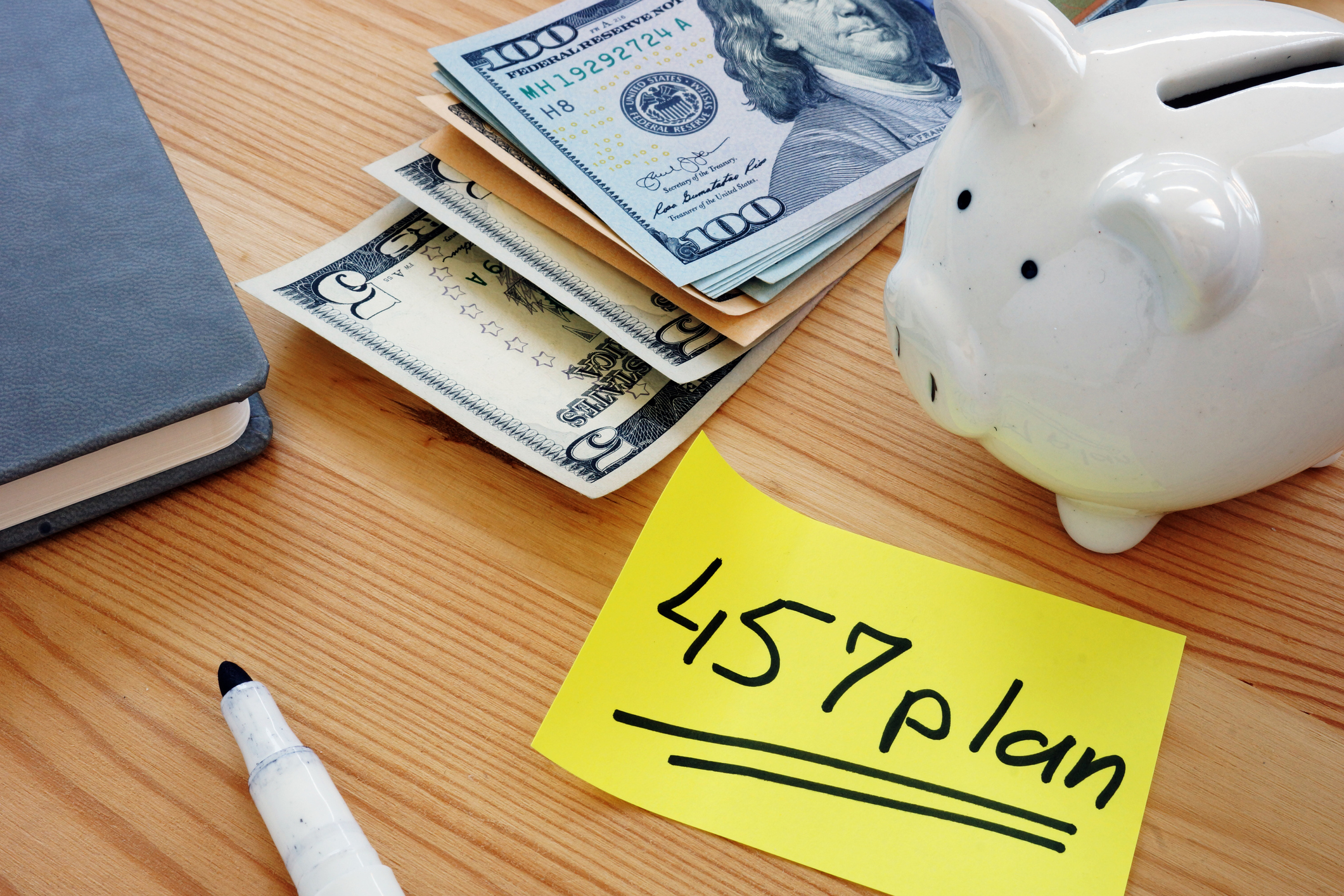Retirees, Create An Emergency Fund for Rental Property
Build a cushion to protect your income from an unforeseen crisis.


Smart landlords know stuff happens—a tenant fails to pay the rent or the furnace fails—and suddenly the money spigot stops flowing. For retirees who rely on rental properties to generate a steady income, it’s a double hit to their wallets. Not only are they minus an income but they’re also still on the hook for all the expenses to maintain the property.
That’s why every landlord needs an emergency fund.The economic fallout from COVID-19 drives home the point: As tenants lost their jobs, many couldn’t pay the rent. Some landlords forgave the debt. Others offered to modify leases so tenants could repay over time.
Federal, state or local moratoriums temporarily prohibited evictions for tenants in arrears. Before it expired in July, the federal moratorium applied to properties with mortgages backed by Fannie Mae, Freddie Mac or Ginnie Mae, or to tenants who paid with housing vouchers. Some state and local moratoriums, which apply to rental properties owned outright or purchased with private money, ended earlier or were extended.
From just $107.88 $24.99 for Kiplinger Personal Finance
Become a smarter, better informed investor. Subscribe from just $107.88 $24.99, plus get up to 4 Special Issues

Sign up for Kiplinger’s Free Newsletters
Profit and prosper with the best of expert advice on investing, taxes, retirement, personal finance and more - straight to your e-mail.
Profit and prosper with the best of expert advice - straight to your e-mail.
Congress has been at a stalemate over a new stimulus package. If the Democrats have their way, extending eviction protections for renters will make it into the legislation. Although Republicans have little appetite for another eviction moratorium, both parties support paying money directly to landlords to make them whole and protect tenants from running up huge debt, according to Tyler Craddock, governmental affairs director of the National Association of Residential Property Managers.
Whatever Congress decides, estate investors and property managers all agree—an emergency fund is essential. But they disagree about how much to set aside.
Hampton and Hampton property managers Kim Meredith-Hampton and her husband Scott Hampton, of Orlando, Fla., recommend a cash cushion equal to three to six months of mortgage payments for one property, assuming that if there are more, only one will be vacant at a time. They also suggest saving 5% of monthly rents for repairs and replacements. For properties the couple manages, they automatically deposit that amount from the rent collected each month into a trust account in their client’s name. The funds are kept separately from the tenant’s security deposit.
Because she feels bearish about the economy, Cynthia Meyer, a real estate investor and a financial planner with Real Life Planning in Gladstone, N.J., recommends saving up to a year’s worth of expenses, including mortgage payments, insurance, property taxes, marketing, utilities, services (such as property management, landscaping, pool and pest control) and any homeowners association dues. You should also set aside money for repairs and replacements—from 1% of the property value annually for a newer home to 4% for an older home. To build an emergency fund, Meyer recommends that each month you save any money left after covering property expenses until you’ve accumulated the target amount.
Where should you stash those reserves? Meyer recommends low-risk, liquid options like savings accounts, high-yield savings accounts, money market funds, Treasury bills or a ladder of CDs with maturities of three, six and 12 months. DepositAccounts.com lists the best interest rates for different savings vehicles.
Robin Voreis, a real estate investor and agent with the Voreis Team in Minneapolis, says a property should support itself from the get-go. “By virtue of buying it at a discount, or having a ton of equity to tap, or generating high cash flow when it’s rented, you can do without the rent for a few months,” she says.
As a backup, Voreis recommends having a credit card exclusively for the property or a home equity line of credit. With a HELOC, you pay interest only on money tapped during the initial withdrawal period, usually five or 10 years, and gradually repay the debt from the rent.
Because it’s harder to get a HELOC on an investment property, you could take one on your current home. If you plan to convert your home to a rental, it’s best to take a HELOC before you move out.
“You’ll have a pile of money at your disposal,” says Voreis.
Profit and prosper with the best of Kiplinger's advice on investing, taxes, retirement, personal finance and much more. Delivered daily. Enter your email in the box and click Sign Me Up.

-
 How to Safely Open an Online Savings Account
How to Safely Open an Online Savings AccountOnline banks offer generous APYs that most brick-and-mortar banks can't match. If you want to make the switch to online but have been hesitant, I'll show you how to do it safely.
-
 7 Ways to Age Gracefully Like the Best Stock Photo Seniors
7 Ways to Age Gracefully Like the Best Stock Photo SeniorsAs a retirement editor, I've gleaned valuable wisdom (and a lot of laughs) from one older couple that tops the seniors' stock photo charts.
-
 My First $1 Million: Banking Executive, 48, Southeast U.S.
My First $1 Million: Banking Executive, 48, Southeast U.S.Ever wonder how someone who's made a million dollars or more did it? Kiplinger's My First $1 Million series uncovers the answers.
-
 What Fed Rate Cuts Mean For Fixed-Income Investors
What Fed Rate Cuts Mean For Fixed-Income InvestorsThe Fed's rate-cutting campaign has the fixed-income market set for an encore of Q4 2024.
-
 Could Tax Savings Make a 50-Year Mortgage Worth It?
Could Tax Savings Make a 50-Year Mortgage Worth It?Buying a Home The 50-year mortgage proposal by Trump aims to address the housing affordability crisis with lower monthly mortgage payments. But what does that mean for your taxes?
-
 The Most Tax-Friendly States for Investing in 2025 (Hint: There Are Two)
The Most Tax-Friendly States for Investing in 2025 (Hint: There Are Two)State Taxes Living in one of these places could lower your 2025 investment taxes — especially if you invest in real estate.
-
 The Final Countdown for Retirees with Investment Income
The Final Countdown for Retirees with Investment IncomeRetirement Tax Don’t assume Social Security withholding is enough. Some retirement income may require a quarterly estimated tax payment by the September 15 deadline.
-
 What Does Medicare Not Cover? Eight Things You Should Know
What Does Medicare Not Cover? Eight Things You Should KnowMedicare Part A and Part B leave gaps in your healthcare coverage. But Medicare Advantage has problems, too.
-
 15 Reasons You'll Regret an RV in Retirement
15 Reasons You'll Regret an RV in RetirementMaking Your Money Last Here's why you might regret an RV in retirement. RV-savvy retirees talk about the downsides of spending retirement in a motorhome, travel trailer, fifth wheel, or other recreational vehicle.
-
 457 Plan Contribution Limits for 2026
457 Plan Contribution Limits for 2026Retirement plans There are higher 457 plan contribution limits in 2026. That's good news for state and local government employees.
-
 Estate Planning Checklist: 13 Smart Moves
Estate Planning Checklist: 13 Smart Movesretirement Follow this estate planning checklist for you (and your heirs) to hold on to more of your hard-earned money.